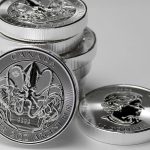Nirvana Albums Ranked: A Comprehensive Analysis of Their Discography
Credit: birchphotographer (Depositphotos.com)
Nirvana stands as a hallmark of 1990s rock music. They captured the essence of an era with a rapid rise to fame that was both impressive and brief. Their influence, despite the band’s short-lived career, remains profound. This is marked by their significant contributions to the grunge movement and broader rock music landscape.
Kurt Cobain, Nirvana’s frontman, is celebrated for his songwriting. He blended raw emotion and punk-rock ideals. His dedication to his craft and the authenticity of his music helped shape the band’s legacy. This introduction sets the stage for a deeper exploration into Nirvana’s discography, ranking their albums from the most to the least impactful.
6. “With the Lights Out” (2004)
With the Lights Out is a box set that showcases Nirvana’s b-sides and rare tracks. It provides a unique view into their growth as a band. Despite only having three studio albums, this collection captures the essence of their musical journey. It’s notable for turning what might be considered musical throwaways into a compelling listening experience.
This box set is akin to discovering hidden gems. It features rehearsal sessions that often outshine the main releases of many other bands. Unlike some less memorable releases, With the Lights Out is a valuable addition for any Nirvana fan’s collection.
Among its highlights, listeners will find Nirvana’s cover of Led Zeppelin during a rehearsal, showcasing their raw talent. Furthermore, from “Token Eastern Song” to Leadbelly covers performed with Mark Lanegan, the collection demonstrates Kurt Cobain’s unmistakable potential and artistry, even in his most casual moments. This release captures the band’s unfiltered energy and innovation, making it a key piece for understanding Nirvana’s legacy.
5. “MTV Unplugged in New York” (1994)
Nirvana skillfully utilized the opportunity provided by “MTV Unplugged in New York” to create a defining moment for both the band and the era. They performed their set with a casual demeanor, choosing to highlight lesser-known tracks and cover songs instead of their biggest hits. Notable exceptions included “Come as You Are.”
In this performance, they chose to collaborate with indie-rock band The Meat Puppets. They featured the Kirkwood brothers on covers of “Lake of Fire,” “Oh, Me,” and “Plateau.” These choices introduced the Meat Puppets’ music to a wider audience.
Kurt Cobain, the band’s iconic frontman, brought a unique charisma to the live performance. This was enhanced by the stage’s funeral-like setup. This choice was poignant, especially in light of Cobain’s widely reported suicide attempt earlier that year.
Cobain and the band delivered intense performances on covers such as David Bowie’s “The Man Who Sold the World,” the Vaselines’ “Jesus Don’t Want Me for a Sunbeam,” and Leadbelly’s “Where Did You Sleep Last Night.” These renditions were both raw and compelling.
Though some may argue that “MTV Unplugged in New York” is somewhat overhyped, it undeniably remains an excellent record in Nirvana’s discography. The album captures a unique blend of emotional depth and musical prowess, making it a memorable part of the band’s legacy.
4. “Incesticide” (1992)
“Incesticide” emerged following the massive success of “Nevermind,” sparking renewed interest in Nirvana’s body of work. This compilation offers a deeper look into the band’s high-energy, noisy garage rock style. It emphasizes melodious elements more heavily than their previous album, “Bleach.” This compilation features both original tracks and covers. Standout songs include “Dive,” “Molly’s Lips,” “Son of a Gun,” and “Aneurysm.” The latter was excluded from “Nevermind” at the eleventh hour. “Incesticide” serves to showcase Nirvana’s diverse sonic landscape and deep-rooted passion for robust, fast-paced rock.
3. “Bleach” (1989)
“Bleach,” released in 1989, showcases Nirvana’s early foray into stoner rock and punk. The album hints at the band’s future potential, with tracks that underscore Kurt Cobain’s knack for blending clever chords and melodies, much like John Lennon.
The standout song, “About a Girl,” reveals Cobain’s subtle admiration for Lennon’s songwriting. This track stands out due to its Beatles-like quality and showcases Cobain’s strength in creating engaging melodies.
Band Lineup:
- Kurt Cobain: Guitar, Vocals
- Krist Novoselic: Bass
- Chad Channing: Drums
Nirvana already demonstrated impressive garage rock capabilities on this record, with the rhythm section of Novoselic and Channing delivering solid, driving grooves. The production, managed by Jack Endino, ties Nirvana’s sound to other prominent Seattle bands such as Soundgarden and Mudhoney.
Songs like “Floyd the Barber” and “Mr. Moustache” highlight Cobain’s quirky humor. Meanwhile, “School” and “Negative Creep” exhibit their capacity for intense volume and aggression, akin to the Melvins or Tad. Tracks like “Blew” and the cover of Shocking Blue’s “Love Buzz” hint at the band’s desire for broader commercial success.
“Bleach” serves as a solid representation of Seattle’s distinctive garage rock scene, reflecting its stormy and raw aesthetic.
2. “In Utero” (1993)
“In Utero” stands as Nirvana’s final studio album, showcasing a compelling collection of tracks that hint at the possible future directions for the band. Contrary to popular belief, the album does not suggest a desire to alienate their audience. Rather, it appears that Kurt Cobain and the band were exploring a long-term career beyond the confines of the grunge scene.
Nirvana’s admiration for the Pixies is evident in this album. They enlisted Steve Albini, the producer behind the Pixies’ “Surfer Rosa,” to helm the project. Cobain’s songwriting on “In Utero” matches the quality of “Nevermind,” though it relies less on catchy pop hooks. Nevertheless, songs like “All Apologies,” “Dumb,” and “Scentless Apprentice” are undeniably striking.
The lyrics on this album are more direct and address a variety of personal and social issues. For example, “Pennyroyal Tea” delves into conflicts within the band, “Rape Me” criticizes the media’s intrusive scrutiny, and “Heart-Shaped Box” explores romantic complexities.
Though some critics initially dismissed “In Utero” as dissonant and difficult to listen to, this album includes distinctively crafted garage-rock tracks. With contributions from guitarist Pat Smear, songs such as “Very Ape,” “Radio Friendly Unit Shifter,” “Milk It,” and “Tourette’s” have a raw energy. This sound is intentionally absent from the album’s major singles.
1. “Nevermind” (1991)
On “Nevermind,” Kurt Cobain embraces his pop-rock tendencies. This leads to improved songwriting and production quality. This approach pays off significantly.
“Nevermind” marks an era-defining moment. It transformed modest garage-rock musicians into grunge icons. The album sold millions of copies and produced massive hits that dominated the charts. The media elevated the Nirvana vs. Pearl Jam rivalry to a cultural phenomenon. This is similar to The Rolling Stones vs. The Beatles in the 1960s. This album also heralded a golden era for alternative rock.
Despite the massive success, it was not mere luck. Cobain had clear principles and struggled with fame. But the achievement of “Nevermind” was the result of meticulous planning.
“In Bloom” stands out as a re-recorded gem from Nirvana’s earlier days with Sub-Pop. It showcases Cobain’s knack for unforgettable hooks. The addition of drummer Dave Grohl brought a thunderous sound that complemented the band’s direction.
Butch Vig’s adept production leaves a notable mark on tracks like “Drain You” and “Lithium.” His blend of sweetness and power elevates the album’s sound.
Cobain’s vocals on songs such as “Breed” and “Stay Away” exhibit confidence. His tenor range and tone rival peers like Layne Staley of Alice in Chains. The track “Something in the Way” furthers Cobain’s romantic persona. Meanwhile, the hidden track “Endless, Nameless” confirms their punk-rock credentials.
The song “Smells Like Teen Spirit” deconstructs and reassembles the best elements of the Pixies sound. It creates a track that was designed to be a single. Though the overwhelming success was unexpected, its wide appeal is evident.
“Nevermind” remains an engaging album that gets under one’s skin much like the finest garage-rock or pop-punk records. Its allure persists, demanding repeated listens and revealing new aspects with each play.
Comments are closed.










in utero as a glimpse of nirvana’s future? hard to see it that way. but okay.
Just got into Nirvana and this list is a great roadmap. Excited to dig into Incesticide, sounds like a hidden gem!